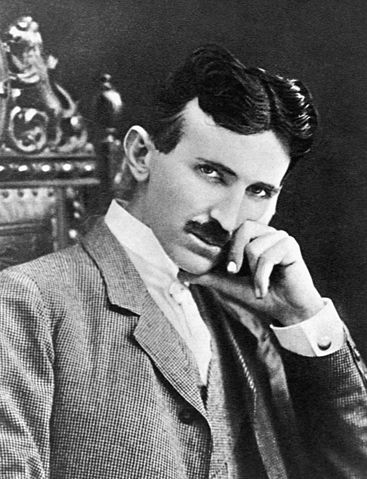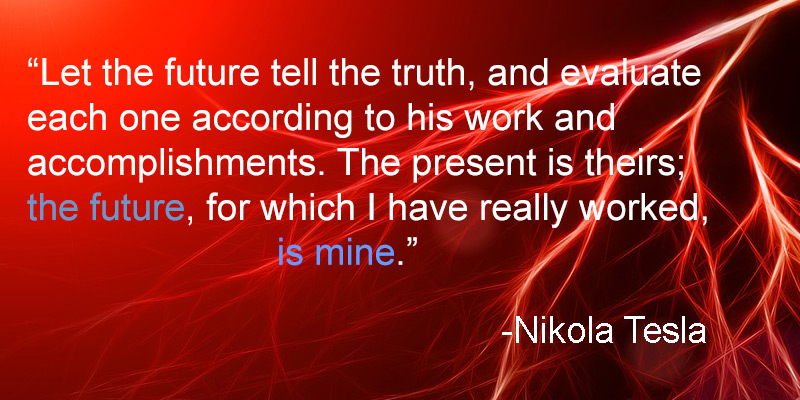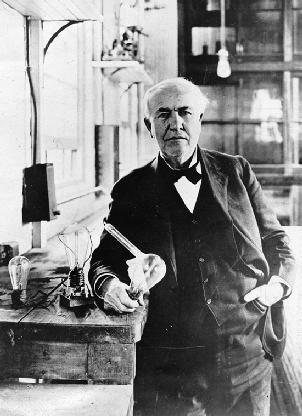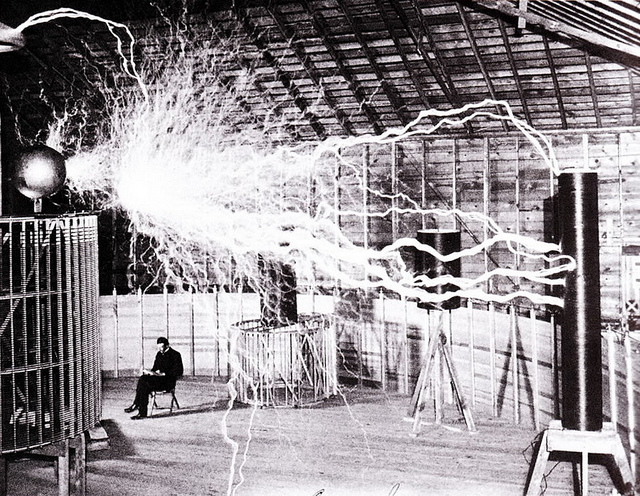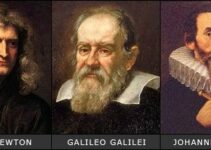Electricity is the single most important thing we use today for powering each of our technologies. From lights to smartphones to cars to computers to powerplants to air conditioners to refrigerators to stoves. Almost any modern technology you can think of uses electricity in one form or another. Most of the time, we don’t even think about it when we flip a switch or press a button. Over time, it has simply become second nature to us. Who was the mastermind behind it all in current state?
Introduction
When we think of electricity, we think of Benjamin Franklin flying his kite high during a thunderstorm and getting struck by lightning. We think of Thomas Edison inventing the incandescent light-bulb and his battle with Westinghouse. Westinghouse is also thought of for turning the industry around with transforming how power is generated and distributed. There was obviously not just one mastermind behind electricity or electric powerplants, but there was one man who had arguably the greatest impact of all when it comes to electricity in current state.
This man, who came along with many groundbreaking ideas, was probably smarter than Edison and most of the top thinkers of our time. He was a man who Einstein, who is widely considered the greatest thinker of our time, personally congratulated. It was this man’s motor that made Westinghouse popular and electricity what it is today. That man was none other than Serbian/Croatian electrical engineer Nikola Tesla, who transformed the world in ways that only recently have we begun to truly appreciate.
For a long time, he was almost forgotten and often overlooked while he was alive and even for decades after he died. He was not taught about in schools and often still is not to the same degree as others like Edison. I still remember lessons on Edison throughout school, but Tesla was not even mentioned until college for whatever reason. He never received the credit he truly earned. As you will see below, he was swindled many times throughout his career and his ideas taken advantage of by others (especially by Edison and J.P. Morgan who screwed over Tesla more than anyone). He never stopped fighting the odds that were placed in front of him by Edison, J.P. Morgan and others actively trying to take him down.
Edison & DC Versus Westinghouse & AC
Before getting into the battle between DC and AC, it is important to put into perspective the differences between the two. Direct current, also known as DC, is electricity flow in one direction and so the voltage (amount of energy) tends to stay constant traveling in one direction only. Electricity is generated and travels in one direction the entire way as the image below shows.
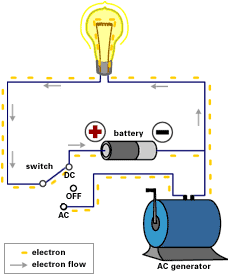
Direct current / Image by PBS
Think of an AAA battery that you may use in a remote. One side of the battery will be positive (+) and the other will be negative (-) because remember power can only flow in one direction in DC systems. For small-scale and small distance electricity transfer in things like batteries, DC works perfectly fine. For powering cities and houses long distances away from powerplants, DC becomes extremely inefficient. At lower voltages, it would be much too inefficient and simply ineffective over long distances since electricity begins to lose power over distances.
For long distance electricity flow, there is something called high-voltage direct-current that is often used nowadays for large scale power-lines, but that was invented many decades after Edison versus Westinghouse/Tesla battle ended (elp, 2002). Usually, HVDC is used in 3 scenarios due to very high costs: (1) connecting 2 AC powerlines with different voltages, (2) for moving electricity over vast distances, and (3) moving power-grid across a body of water. HVDC is not relevant in Edison versus Tesla/Westinghouse discussion. HVDC, which began to be more used in the 1970s, used newer technologies not available to Tesla nor Edison. AC power is still considered the current-day basis for electricity.
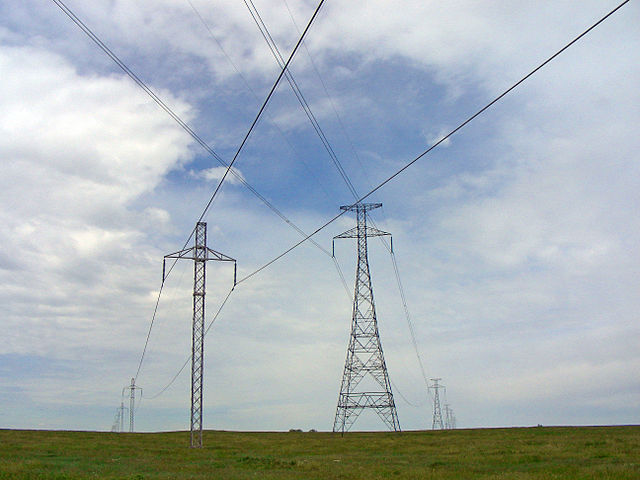
HVDC powerlines/Photo by wiki / cc
Alternating current, also known as AC, oscillates the current back and forth at the frequency rate set and so current can travel in both directions. Tesla calculated that 60 times per second was the most effective frequency rate to use (Kurtus, 2016). AC tends to be much more efficient over long distances than DC. In Tesla’s times, it was not possible to generate extremely high voltages so AC was the best option with the technology available in that day and age. In order to get higher voltages, AC can also be stepped up and down using a transformer, which can be used to either increase or decrease voltages depending on the case (PBS). Transformers cannot be used with DC, which is perhaps the biggest advantage that AC had over DC. DC cannot be stepped up and down, making it extremely inefficient beyond short distances.
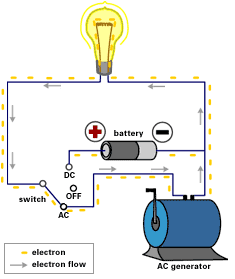
Alternating current / Image by PBS
Tesla was the one who invented the Alternating Current motor, the generators, transformers, etc and created the patents for them. He later sold the patents to George Westinghouse, who was the main investor in Tesla. Westinghouse and Edison had their own rivalries going and Tesla was in the middle of it with his ideas. Edison was on the side of DC while his biggest opponent Westinghouse was on the side of AC.
Arrival of Tesla
Tesla arrived in America in 1884 with his dream of creating a motor with more efficiency than Edison’s DC generator at the time. Initially, he lost the battle because his ideas were simply seen as nonsensical and/or too radical. He also did not have any money to directly take on Edison, who already was considered the greatest electrical engineer at the time and extremely wealthy by the time Tesla entered the picture. Tesla kept trying to find someone to give him one chance. How could this poor immigrant be trusted in his claim that he had this big idea which could take down the great Thomas Alva Edison? No investor wanted to take the chance on Tesla’s AC motor idea – it may have been that they simply were not smart enough to understand Tesla’s ideas or maybe Tesla was far ahead of his time.
Tesla went to his idol, Edison, to try to convince him to consider the AC motor. Edison turned him down, refusing to believe Tesla’s idea of AC motor was worthy of consideration. If Edison had considered Tesla seriously, Edison could have revolutionized the world right there and then in his own name. It was this denial to Tesla that Edison would fight for many years of his life, and he would eventually lose.
In the meanwhile, Edison saw potential in Tesla and hired him to his company. In his work, Tesla told Edison he could improve Edison’s entire DC generator by redesigning it. Edison offers to pay $50,000 for the work if Tesla could improve Edison’s work (Sandford, 2012). Once Tesla finished the improvements after 1 year of working on it day and night, Edison was impressed. At the same time, Edison refused to pay him the $50,000 that was promised and laughed at him. Tesla, feeling cheated and humiliated by Edison for laughing after the work he put into Edison’s generator, quit his job under Edison. This was Edison’s second biggest mistake: angering Tesla.
AC Induction Motor
Tesla’s AC induction motor is widely considered one of the greatest technological inventions of all time. I would argue it is a top 5 technological invention of all time. Without it, it would be impossible to transport electricity beyond more than a few miles from a powerplant. It is difficult to foresee how the world would look today without AC motor, which is the basis for AC power.
Once Tesla quit Edison’s company, he went searching for investors to help him get started. After many trials and tribulations and more trickery by other businessmen taking advantage of him, Tesla finally came across 2 investors Alfred Brown and Charles Peck, who were willing to fund a lab for Tesla to work in.
In his new lab, Tesla invented his famous AC motor, power generators, transformers, wires, etc that made AC possible on the big scale. He split the money he made off those patents with Brown and Peck as they had agreed. At that point, George Westinghouse came along and changed Tesla’s life further by buying Tesla’s AC motor and patent for good money.
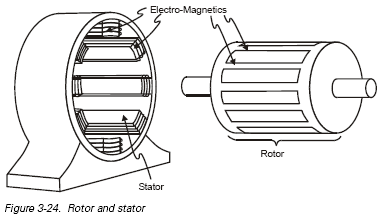
Image by electricianeducation
The way the AC induction motor works is it has two main parts to it: a stator and rotor. As the image above shows, the stator is stationary on the outside with electromagnets throughout it. The rotor is the cylindrical part that lies inside the stator and spins. The rotor also contains electromagnets that face outwards towards the stator. The electromagnets on the stator are setup with coils around it that when current flows through the coil, it creates a rotating magnetic field in the stator.
As currents change directions alternating back and forth, you get an alternating magnetic field (rotating magnetic field that also alternates 50 times per second). Remember, north and south attract and same poles repel. The rotor has poles on its electromagnets so it gets attracted to the opposites poles on the stator. As the magnetic field alternates in the stator, the rotor begins to spin continuously trying to reach the opposite pole. The spinning causes electric current to flow through, which can be harnessed as electricity. It is slightly more complex, but that is the basic idea of how an AC motor works.
Following video shows it in more detail:
Feeling threatened by the wealthy Westinghouse siding with Tesla, Edison started his propaganda against alternating current. Remember, these were Tesla’s inventions, and there was already animosity between Edison and Tesla. That animosity grew into bitter hatred and rivalry at this point that they never forgave each other for it.
Why DC initially?
At first, DC was dominating across the board, winning the initial battle. There were quite a few reasons for this. First, DC was already heavily invested in. Instead of changing over to the newer Alternating Current, investors decided to stick to DC. Edison had the capital and investors in his own pocket. Second, there was no AC motor to do damage to DC. Until Tesla invented his AC motor in the 1880s, AC was impractical for all intents and purposes. While Edison was backed by wealthy investors such as JP Morgan and his own wealth, Westinghouse was on the losing end of the battle. Until Tesla entered the picture with his AC motor.
Third, even after Tesla invented the AC motor, Edison was in full denial and began circulating faulty ideas that AC was much more dangerous and not as effective to promote his own DC (King, 2011). Another engineer, Harold Brown, also began to circulate false ideas of the dangers of AC while in collusion with Edison.
Brown was officially hired by Edison in 1888 to promote propaganda against AC with Edison providing the resources, equipment and laboratory to promote the false doubt (about). Brown, using Edison’s equipment, began to publicly electrocute dogs, horses and other animals using AC power as propaganda against AC. That was also where and when the electric chair came into being through the work of Brown under Edison while trying to argue that AC can kill people (about).
Tesla and His War With Edison
Often dubbed the War of Currents, Tesla (alongside Westinghouse) and Edison fought over AC and DC for almost a decade. They fought in court, in the media, and in the streets. As mentioned earlier, Edison was electrocuting animals to try to show the dangers of AC and going full propaganda in the process. Westinghouse later said:
“I remember Tom [Edison] telling them that direct current was like a river flowing peacefully to the sea, while alternating current was like a torrent rushing violently over a precipice. Imagine that! Why they even had a professor named Harold Brown who went around talking to audiences… and electrocuting dogs and old horses right on stage, to show how dangerous alternating current was.” (PBS, n.d)
After battling back and forth for several years, Westinghouse and Tesla decided to go big: lighting up the 1893 Chicago’s World Fair. Westinghouse felt this was their one big chance to show the world their idea (teslasociety, n.d). Their AC system was much more efficient so they bid half of what Edison was charging with DC. Chicago chose to go with the duo of Westinghouse & Tesla over Edison’s General Electric. That was the beginning to the worst nightmare of Edison’s career.
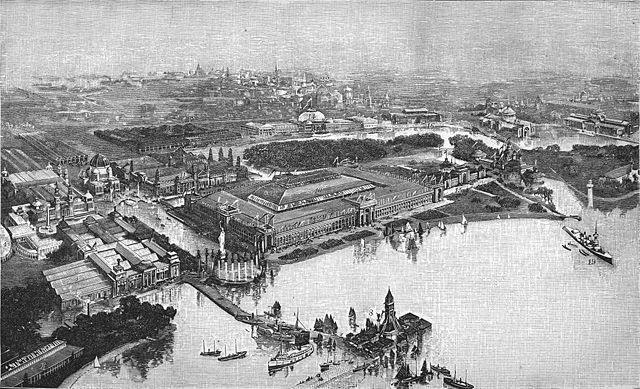
1893 Chicago’s World Fair /Photo by wiki / cc
To power up the World Fair, Westinghouse and Tesla set up several AC systems and connected everything together. Tesla showed off his other inventions and ideas at the fair, including Tesla coil, wireless energy, etc. Tesla also had neon lights, which he had just recently invented, set up everywhere. President Grover was also present at the fair, and he pressed the button that lit up more than 100,000 of incandescent light bulbs being powered by AC generators (PBS, n.d). The following picture was taken at the World Fair of these AC generators:
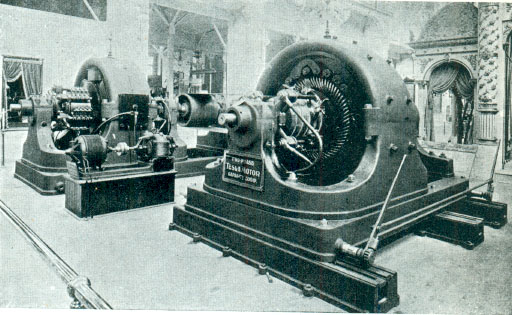
Photo by wiki / cc
Chicago’s world fair was one of the greatest events in history, celebrating Christopher Columbus’ landing in America 400 years earlier. Entire buildings were set up for the single event with many scientists and engineers attending from all over the world. The world took note of the wonders of AC power as it lit up everything for the world to see.
From that day forward, 80% of the investments for electrical devices were for AC power (PBS, n.d.). Nikola Tesla, with the help of Westinghouse, defeated the greatest electrical engineer to date in Thomas Edison.
AC power won the war of the currents. Thomas Edison and his company ended up looking foolish in the end with Westinghouse and Tesla getting the biggest laugh. Edison, after years of fighting, finally began to use AC himself. He later admitted he knew AC was better all along for power generation and transmission. Edison also admitted he should have taken Tesla’s advice on AC motor years earlier when Tesla was still working for him (King, 2011). All of the resources and time they put into the battle would have been avoided altogether.
We still use DC power for appliances inside houses for powering things like computers, televisions and anything that uses batteries. Remember, the direction of current in AC is always changing so AC power cannot be stored (Kurtus, 2014). A lot of electricity is wasted converting AC-DC back and forth, but it is necessary. AC is used in power-lines, which stay on around the clock, but appliances in house don’t stay on nonstop.
The next few inventions Tesla came up with would continue to change the world and further upstage Edison’s inventions. Next part of this entry will go into Tesla’s futuristic ideas on radio, Tesla coil and wireless energy.
- My Favorite Books - February 7, 2024
- Review of Carl Sagan’s The Demon-Haunted World - January 31, 2024
- The 75 Greatest Films of All Time - December 22, 2023

